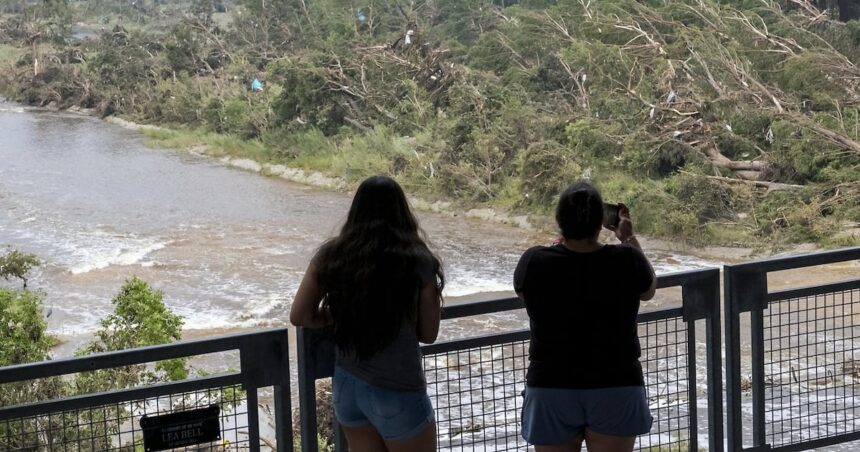The relentless floodwaters that swept through central Texas with devastating force have now claimed more than 100 lives, officials confirmed Tuesday, as emergency crews continue their grim search through mud-caked debris and submerged vehicles across the ravaged Hill Country region.
“We’re still finding victims in places we’ve already searched twice,” said Travis County Emergency Management Director Miguel Sanchez, his voice heavy with exhaustion. “The water moved with such force that it carried people and vehicles miles from where they were originally swept away.”
The catastrophic flooding, triggered by what meteorologists are calling a “rain bomb” that dropped nearly 27 inches of precipitation in less than 12 hours, has transformed the normally picturesque landscapes of New Braunfels, San Marcos, and parts of Austin into apocalyptic scenes of destruction. The Guadalupe and Blanco rivers, usually gentle waterways popular with tourists, became raging torrents that tore through communities with little warning in the pre-dawn hours of July 4.
Governor Melissa Garza, who toured the devastated areas by helicopter yesterday, has expanded the state disaster declaration to 17 counties and requested additional federal emergency assistance. “What we’re witnessing is unprecedented in modern Texas history,” Garza told reporters at an emergency operations center in San Marcos. “The scope of this disaster will require years, not months, of recovery efforts.”
The flooding has displaced an estimated 35,000 residents, many of whom sought shelter in emergency accommodations across central Texas. At New Braunfels High School, now serving as the largest evacuation center in the region, volunteers struggle to meet the basic needs of over 2,000 displaced people.
“We lost everything in minutes,” said Elena Cortez, 43, who escaped her riverside home with only her children and the clothes they were wearing. “The water came so fast we couldn’t even grab our phones or IDs. My neighbors weren’t so lucky.”
Search and rescue teams from across the nation have converged on the affected areas, utilizing specialized equipment including sonar-equipped boats and cadaver dogs. Texas Department of Public Safety officials acknowledge that the death toll will likely rise further as crews gain access to areas currently impossible to reach.
“We have entire neighborhoods we haven’t been able to thoroughly search yet,” said Captain Rafael Mendez of Texas DPS. “There are still sections where the water is too high, or the debris fields too dangerous, for our teams to safely enter.”
Questions about the state’s flood preparedness and early warning systems have begun to surface, though officials maintain that addressing such concerns must wait until rescue and recovery operations are complete. Critics point to development patterns in flood-prone areas and the absence of updated flood mitigation infrastructure as contributing factors to the disaster’s severity.
Climate scientists have noted that while flooding has always been a threat in central Texas, the intensity of recent precipitation events aligns with predictions about extreme weather patterns associated with climate change. Dr. Emily Winters, a hydrologist at the University of Texas at Austin, explained that warmer atmospheric conditions can hold more moisture, leading to more intense rainfall events.
“What we once called ‘500-year floods’ are now occurring with alarming frequency,” Winters said. “The data suggests these extreme precipitation events are becoming more common and more intense across the southern United States.”
As rescue efforts continue and communities begin the painful process of assessing their losses, many Texans are displaying remarkable resilience. Volunteer coordination centers have been established throughout the region, with thousands offering everything from manual labor to professional services.
The economic impact of the disaster remains incalculable, with preliminary estimates suggesting property damage alone could exceed $8 billion. Tourism, a crucial economic driver for the affected Hill Country communities, will likely suffer severe disruptions through the remainder of 2025 and beyond.
As Texas faces its deadliest natural disaster in decades, the question emerges: how will this catastrophe reshape our understanding of flood risk in an era of increasingly extreme weather, and what fundamental changes to infrastructure and planning might prevent similar tragedies in the future?

























